The Circus Maximus, once the beating heart of ancient Rome, served as an arena for thrilling chariot races and captivating spectacles. Picture the roar of the crowd as the chariots thundered by and imagine the intense rivalries between factions. As we embark on a journey through the grandeur of this historic site, let us unravel its rich history and the legacy it has left behind.
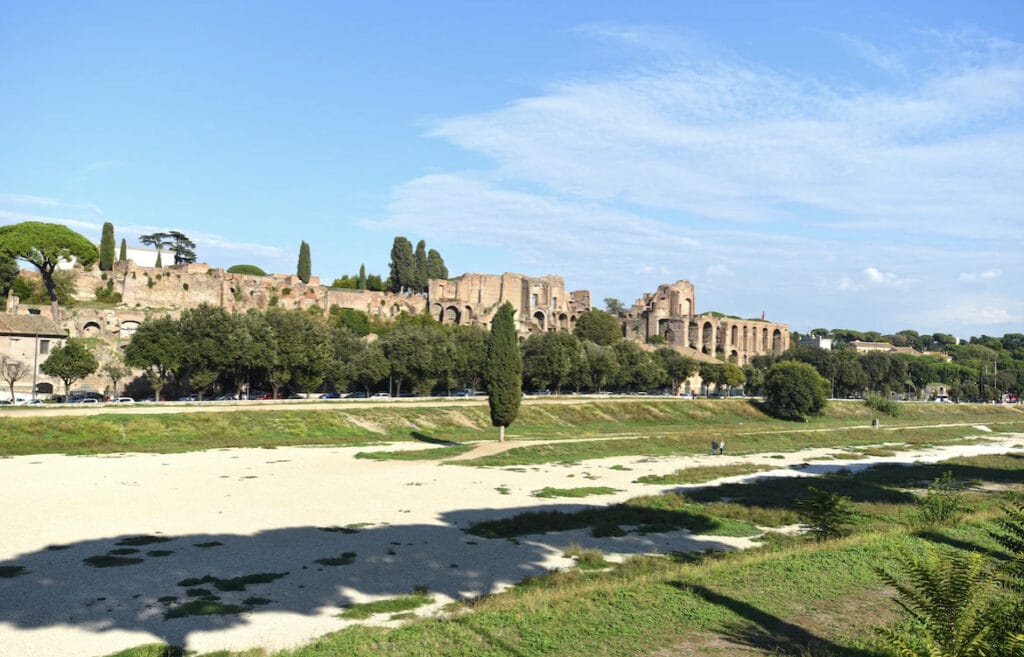
Key Takeaways
- Circus Maximus began as an agricultural landscape and developed into a major entertainment hub in ancient Rome, hosting thrilling chariot races, wild animal hunts, gladiator fights and public executions.
- The site served to showcase the cultural and political strength of the Roman Empire by connecting emperors with their people through events at Circus Maximus.
- Efforts have been made to revive its former glory while preserving its historical significance for modern visitors.
The Birth of Circus Maximus: From Agricultural Landscape to Entertainment Hub
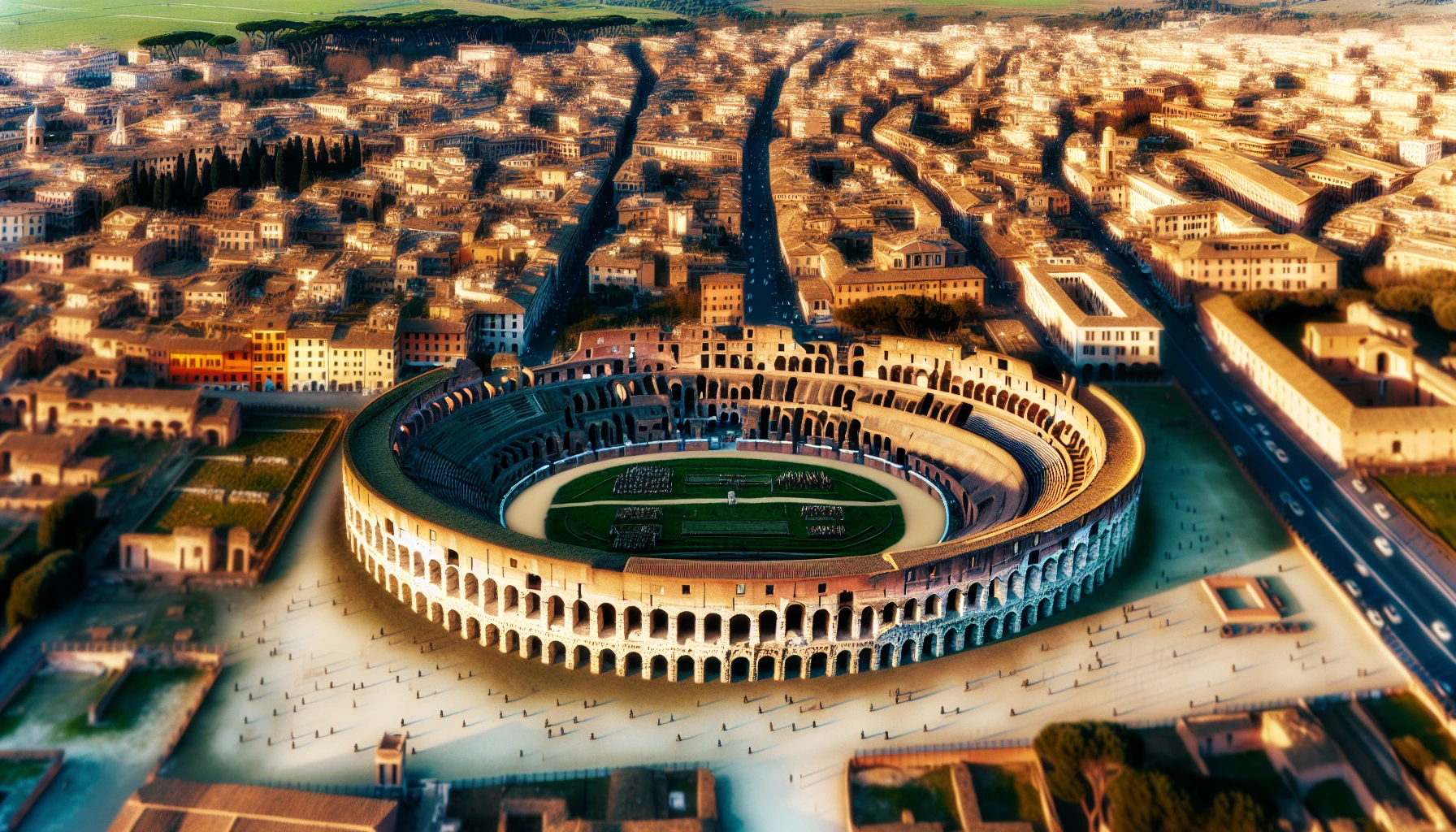
Nestled between the Aventine and Palatine hills in Rome, the Circus Maximus has come a long way from its humble beginnings as an agricultural landscape. Over the centuries, it transformed into a major entertainment hub in ancient Rome, hosting a variety of events and spectacles that captivated countless thousands of spectators on the Palatine Hill.
From its inception in the sixth century BC to its zenith during the Imperial Era, the Circus Maximus continuously adapted to cater to Rome’s escalating demand for large-scale entertainment.
Regal Era
The origins of the Circus Maximus date back to the Regal Era, when it was merely a simple agricultural landscape. Established by Tarquinius Priscus in the sixth century BC, the site initially featured nothing more than turning posts, banks, and shrines. However, as Rome expanded, so too did the Circus Maximus, gradually transforming into the largest and most famous of all Roman circuses, with a capacity of over 150,000 spectators during the Imperial Era.
The inaugural chariot races at Circus Maximus, which attracted people from all over the Roman world, took place during the Regal Era. These ancient races laid the foundation for the thrilling spectacles that would come to define the site, with the Circus Maximus becoming synonymous with chariot racing and mass entertainment in ancient Rome.
Republican Era
The Circus Maximus underwent further development as Rome shifted from a monarchy to a republic. During the Republican Era:
- Julius Caesar extended the seating tiers to run almost the entire circuit of the track, accommodating the growing number of spectators who flocked to the venue for entertainment.
- Tarquinius Superbus commissioned seats for ordinary citizens.
- Other elements like starting gates and a central barrier were introduced to enrich the racing experience.
The chariot races during the Republican Era were organized by the aediles, who were responsible for allocating starting stalls by lottery. The races were typically seven laps long, and large bronze dolphin-shaped lap counters were added in 33 BC to help keep track. Stone track-side seating was also constructed exclusively for senators, demonstrating the importance of chariot racing in the social and political life of the Roman Republic.
Imperial Era
The Imperial Era marked the golden age of Circus Maximus, with the venue undergoing further enhancements to accommodate its growing popularity. Augustus, the first Roman emperor, made significant additions to the Circus Maximus, including:
- The erection of an Egyptian obelisk of exoteric sanctity
- The construction of a pulvinar, an imperial box or temple raised high above the trackside seats
- The repair of the fire damage of 31
- Watching the games from the pulvinar with his family
During this era, the Circus Maximus reached its peak capacity, accommodating over 150,000 spectators who came to witness the thrilling chariot races and other spectacles. It was during this time that the Circus Maximus truly became the heart of ancient Rome’s entertainment scene, reflecting the grandeur and magnificence of the Roman Empire.
The Thrill of Chariot Racing: Ancient Rome’s Most Popular Sport
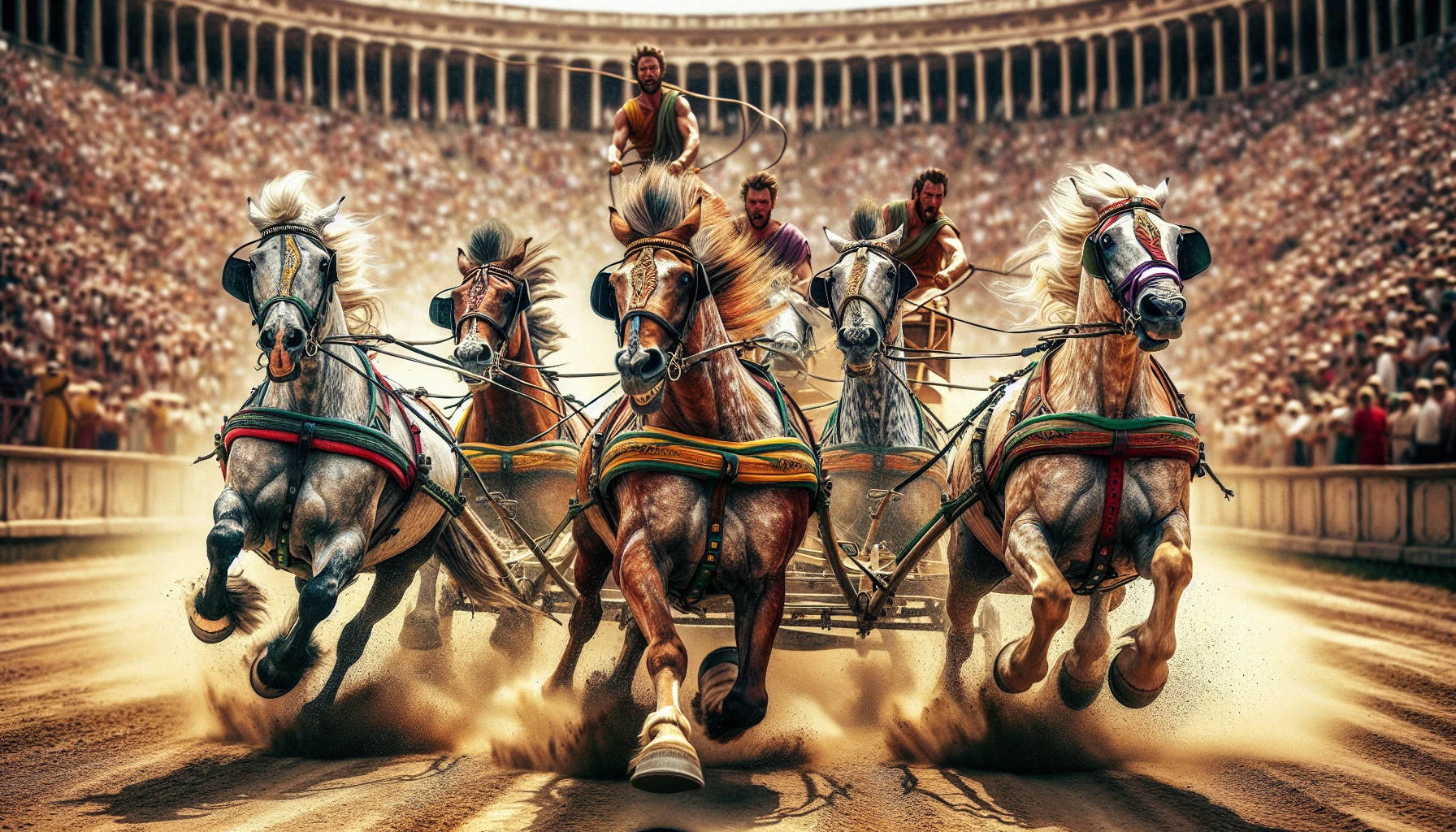
Of all the spectacles held at the Circus Maximus, it was the thrill of chariot racing that captured the hearts and minds of ancient Romans. As the most popular sport in ancient Rome, chariot racing provided an adrenaline-fueled experience for both the participants and the spectators. With the thundering hooves of the horses and the deafening roar of the crowd, chariot races were a spectacle like no other.
Chariot racing was a spectacle that involved not only speed and skill, but also served as a stage for fierce faction rivalries and star charioteers, captivating and earning the respect of the Roman populace. Through the excitement of four-horse chariot races, the passion of circus factions, and the fame of celebrity charioteers, chariot racing left an indelible mark on the history of Circus Maximus and ancient Rome.
Four Horse Chariot Races
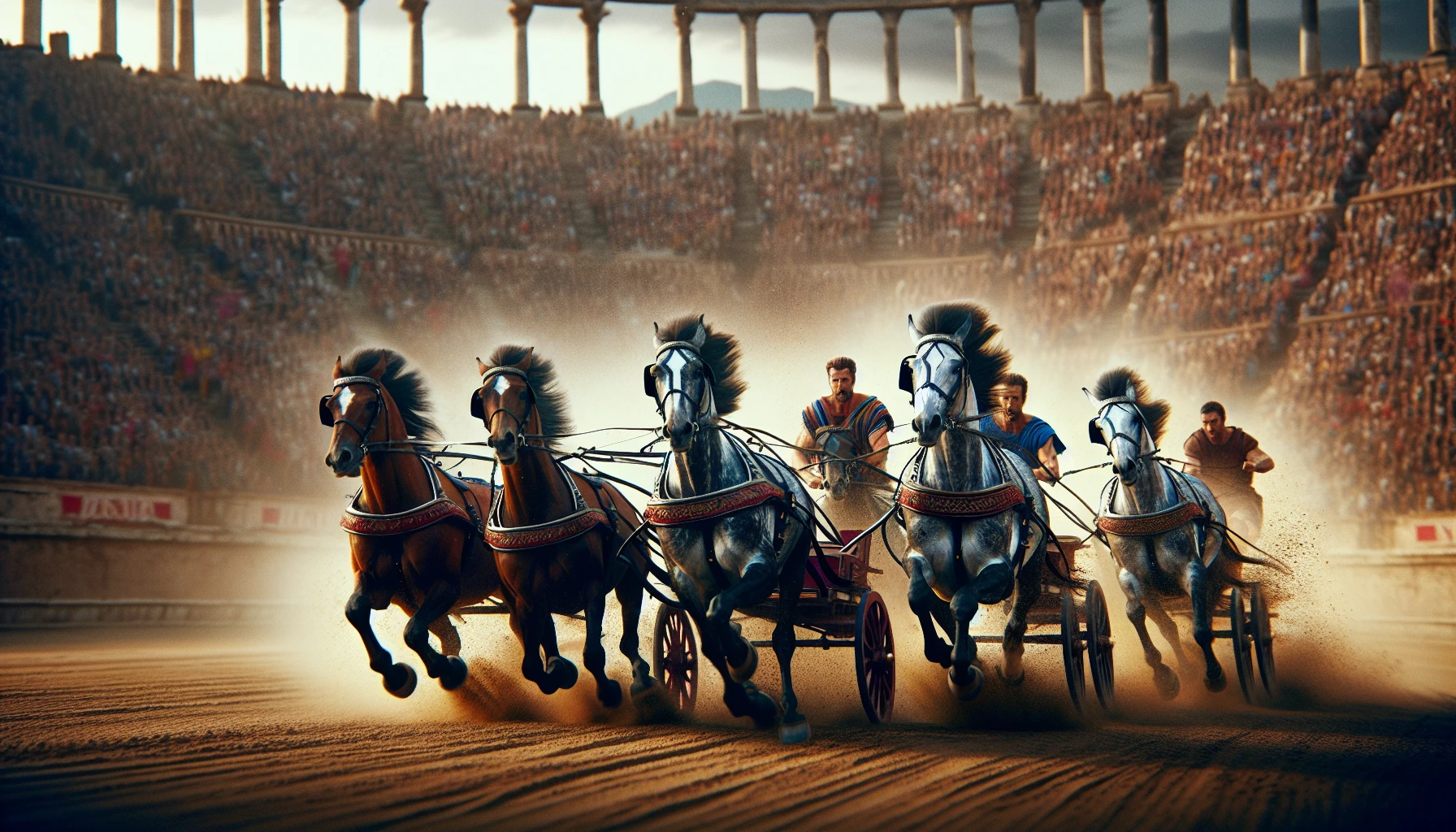
The main attraction at Circus Maximus was the quadrigae, four-horse chariot races that drew large crowds and generated immense excitement. These races typically lasted for seven laps around the arena, with the charioteers often starting their careers as young boys, many of whom were slaves trained by the factions. The four-horse chariots were designed with a small, low wooden framework filled in with interwoven straps for the floor, ensuring a lightweight and agile vehicle for the racers.
These races were not just a test of speed, but also a test of strategy and skill. Charioteers had to navigate tight turns, avoid collisions, and outmaneuver their opponents in order to secure victory in the chariot race. The four-horse chariot races at Circus Maximus were a thrilling display of athleticism, bravery, and mastery, captivating the hearts of countless spectators for centuries.
Circus Factions and Rivalries
Circus factions fueled the intense rivalries among racing teams, adding to the spectacle and drama of the chariot races. The four major circus factions in ancient Rome were:
- The Blues
- The Greens
- The Whites
- The Reds
These factions, often consisting of young Roman aristocrats, were frequently linked to imperial politics and played a significant role in the organization of the public Roman games at Circus Maximus.
The intense competition between the factions and their passionate supporters created an electric atmosphere at the races. As fans cheered for their favorite teams and engaged in heated rivalries, the excitement and anticipation of the races reached fever pitch, making Circus Maximus a hub of exhilaration and entertainment in ancient Rome.
Celebrity Charioteers and Their Fame
Successful charioteers became celebrities in ancient Rome, earning fame and fortune as they competed for victory. Renowned charioteers like Flavius Scorpus, Pompeius Musclosus, and Gaius Appuleius Diocles captured the admiration of the Roman people, showcasing their skills and prowess on the race track.
These celebrity charioteers transcended the arena, becoming revered figures with countless admirers. Their fame and success provided them with opportunities to accumulate great wealth and even gain their freedom, if they were slaves. The stories of these charioteers continue to captivate the imagination, serving as a testament to the enduring appeal of chariot racing in ancient Rome.
Beyond Chariot Racing: Other Spectacles at Circus Maximus
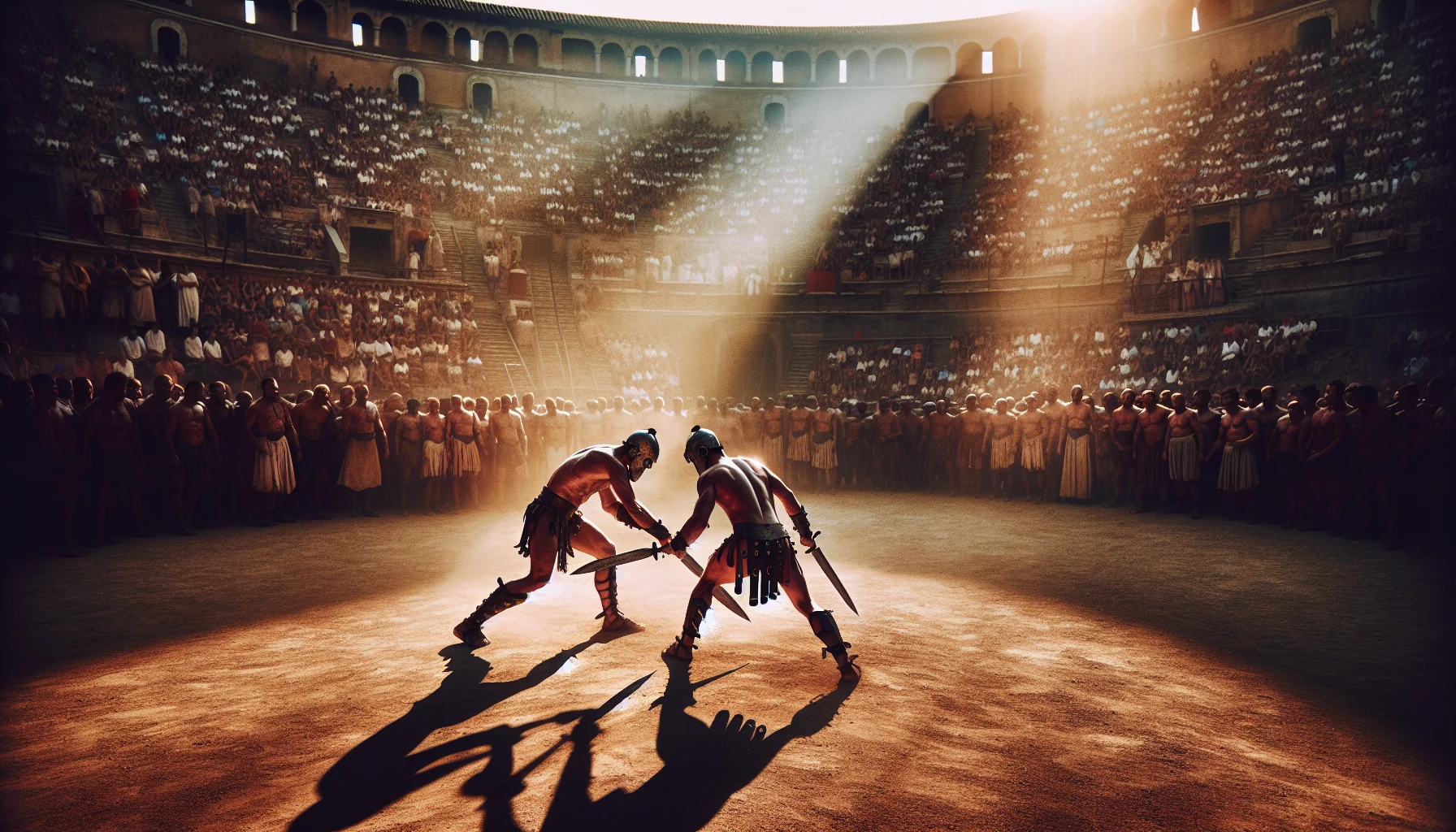
While chariot racing was the star attraction, Circus Maximus played host to a variety of other spectacles and events that enthralled the Roman people. From wild animal hunts to gladiator fights and public executions, the Circus Maximus was a versatile venue for mass entertainment, showcasing the diverse interests and passions of ancient Rome.
These other events did more than supplement the entertainment offerings for the public, they also underscored the dominance and control of the Roman Empire. Through these events, Circus Maximus became an integral part of the cultural and political fabric of ancient Rome, reflecting the grandeur and complexity of its society.
Wild Animal Hunts
Beyond the adrenaline-fueled chariot races, wild animal hunts also drew significant attention at Circus Maximus. These hunts, known as venationes, showcased exotic creatures from across the empire, such as:
- lions
- tigers
- elephants
- bears
- cheetahs
- bulls
- crocodiles
These animals were pitted against skilled hunters or gladiators in gladiatorial games.
The wild animal hunts served as a thrilling display of man’s dominance over nature, capturing the imaginations of the Roman people. The skill and bravery of the hunters, combined with the ferocity and exoticism of the animals, made for a captivating spectacle, further cementing Circus Maximus as a hub of entertainment in ancient Rome.
Gladiator Fights
Gladiator fights were another brutal yet captivating form of entertainment at Circus Maximus. These highly choreographed duels to the death showcased the strength, skill, and courage of the gladiators, who often fought for their lives and the glory of victory.
Although the Colosseum was the primary venue for gladiator fights in Rome, Circus Maximus also played host to these bloody battles, attracting spectators who reveled in the violence and drama. Gladiator fights at Circus Maximus served as a testament to the Roman Empire’s love for spectacle and entertainment, even in its most brutal forms.
Public Executions
Public executions at Circus Maximus served as a stark warning against challenging Roman law and power. Offenders convicted of serious crimes, such as treason, insurrection against authority, and destruction of crops, among others, were executed in front of the gathered masses.
The public executions not only served as a form of punishment but also as a display of the power of the Roman state. The spectacle of these executions reinforced the authority of the ruling powers, showcasing the might and control of the Roman Empire over its citizens.
The Cultural and Political Impact of Circus Maximus
Circus Maximus played a pivotal role in the cultural and political dynamics of ancient Rome. As the largest mass entertainment venue, it connected emperors with the people, serving as a platform for political propaganda and a site for religious events. Through its various spectacles and events, Circus Maximus contributed to the shaping of Rome’s identity and its place in history.
The political and cultural impact of Circus Maximus is evident in the way it was used by emperors and other political figures to gain support and influence. By attending chariot races and other events, emperors were able to engage with their subjects and demonstrate their approval of the popular entertainment, thereby reinforcing their power and authority.
Connecting Emperors with the People
The chariot races and other events at Circus Maximus provided emperors with a unique opportunity to connect with their subjects and gain their support. By attending these events and demonstrating their approval of the popular entertainment, emperors could engage with the Roman people and reinforce their position and authority.
Emperors leveraged Circus Maximus as a stage to exhibit their affluence and might, staging extravagant events that attracted individuals from all societal levels. These events served to reinforce the emperor’s status and raise their popularity among the populace, further demonstrating the importance of Circus Maximus in the political life of ancient Rome.
Religious Significance
In addition to its political and cultural impact, Circus Maximus also held religious significance for the people of ancient Rome. It had shrines dedicated to various gods and goddesses, such as:
- Castor and Pollux
- Sol
- Magna Mater
- Neptune
- Venus Murcia
Circus Maximus served as a site for religious events and festivities.
These religious ceremonies often took place alongside chariot races and other events, underscoring the intertwined nature of entertainment, politics, and religion in ancient Rome. Through its religious significance, Circus Maximus played a vital role in shaping the spiritual and cultural landscape of the Roman Empire.
From Ancient Rome to Modern Times: The Current State of Circus Maximus
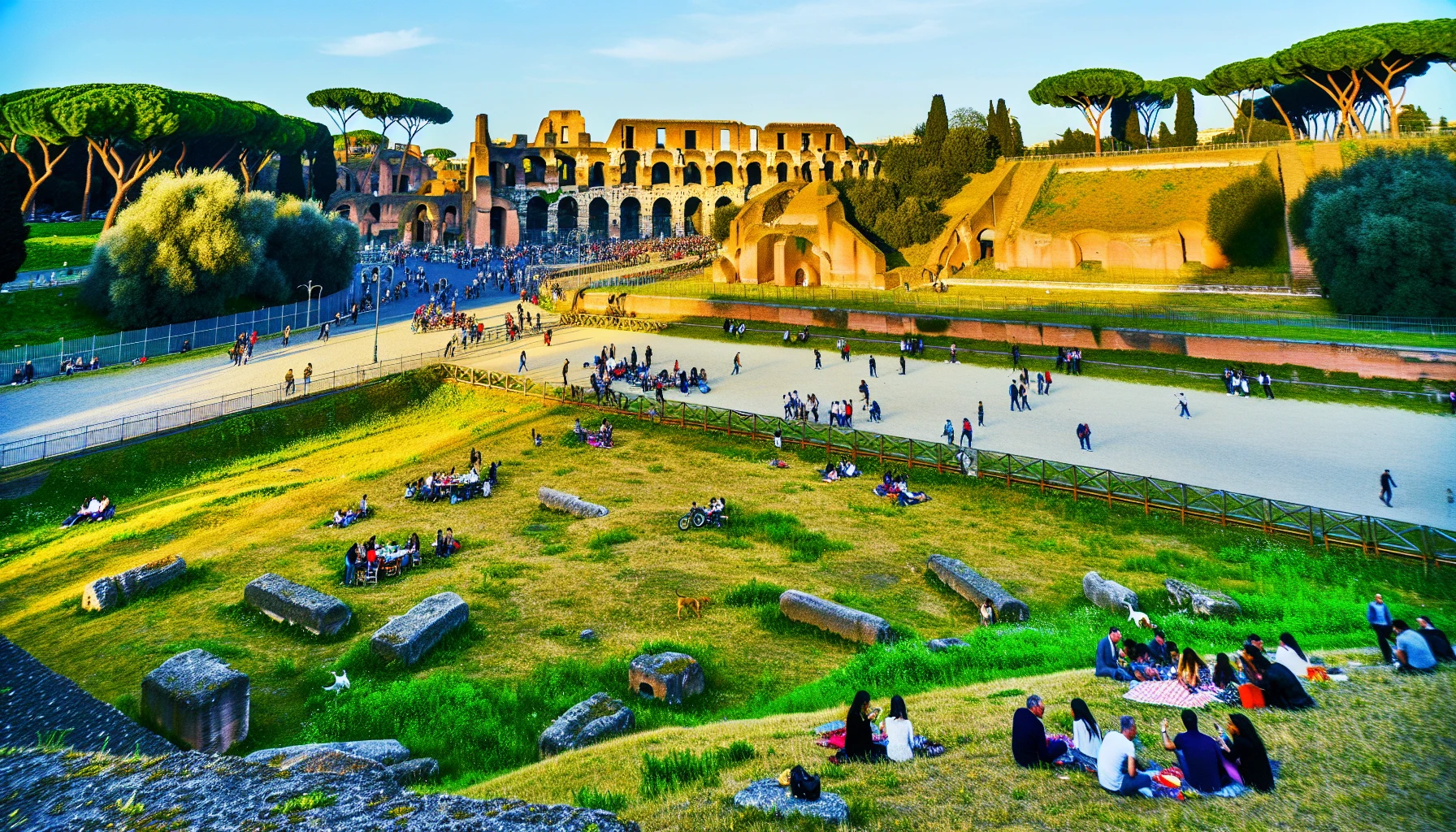
Over time, the Circus Maximus has suffered deterioration and dilapidation, its formerly majestic structures now merely ruins. However, efforts have been made to revive and preserve the site for modern visitors, transforming it into a park area for public events and offering augmented reality tours to explore its history.
This renaissance of the Circus Maximus stands as proof of its lasting influence, and recalls the splendor and spectacle that once enthralled the ancient Romans. Today, the site stands as a symbol of the cultural and historical heritage of Rome, inviting visitors to journey back in time and discover the fascinating world of the Circus Maximus.
Decline and Decay
Multiple factors contributed to the decline of Circus Maximus, including neglect, the risky nature of the chariot races, and the building of the Colosseum, which drew focus and resources away from the site. After falling into disuse in the 6th century, the site was used for various purposes, such as a market garden and a gas works site, before being eventually abandoned.
Circus Maximus, once a symbol of the grandeur and magnificence of the Roman Empire, was left to decay and crumble, with only the grass-covered racing track and the outline of the central barrier remaining as a testament to its former glory. Despite its decline, the memory of Circus Maximus and the spectacles it once hosted continues to captivate the imaginations of those who visit its ruins.
Revival and Preservation
Recently, there have been initiatives to restore and conserve the Circus Maximus, converting it into a park for public events like concerts, assemblies, and celebrations. The site has also been adapted to accommodate modern technology, with augmented reality tours allowing visitors to explore the history of the Circus Maximus in an immersive and interactive way.
The revival and preservation of the Circus Maximus not only serve as a reminder of its historical significance but also provide a unique opportunity for modern visitors to experience the thrill and spectacle of ancient Rome. Through these efforts, the legacy of the Circus Maximus lives on, connecting the past with the present and inviting us to step back in time and imagine the roar of the chariots and the cheers of the crowd.
Summary
From its humble beginnings as an agricultural landscape to its transformation into a major entertainment hub, the Circus Maximus has captured the hearts and minds of countless generations. Through the thrill of chariot racing, the intensity of faction rivalries, and the captivating spectacles of wild animal hunts and gladiator fights, the Circus Maximus played a pivotal role in the cultural and political life of ancient Rome. Today, as we explore its ruins and immerse ourselves in its rich history, we are reminded of the grandeur and spectacle that once defined this remarkable site, and the indelible mark it has left on the world.
Frequently Asked Questions
What is the Circus Maximus and what happened there?
The Circus Maximus was a chariot racetrack in Rome built in the 6th century BCE, used for events such as the Roman Games and gladiator fights. It hosted its last chariot race in the 6th century.
Why was Circus Maximus destroyed?
Circus Maximus was used until 549 AD, when its stands were demolished and the stones were taken for use in churches and palaces. Thus, it was destroyed due to its decay and lack of preservation.
Is Circus Maximus an actual movie?
Circus Maximus is an American musical anthology film released in cinemas on 27 July 2023 and directed by Travis Scott, with segments by Gaspar Noé, Nicolas Winding Refn, Harmony Korine, Valdimar Jóhannsson, Andrew Dosunmu, CANADA, and Kahlil Joseph. It is available for viewing on Apple Music via an exclusive live stream and music video playlist.
What was the difference between the Colosseum and Circus Maximus?
The Colosseum could seat 70,000 spectators, whereas Circus Maximus had a seating capacity of over 150,000, making it the larger of the two.
When was the Circus Maximus established?
The Circus Maximus was established in the sixth century BC by Tarquinius Priscus.
